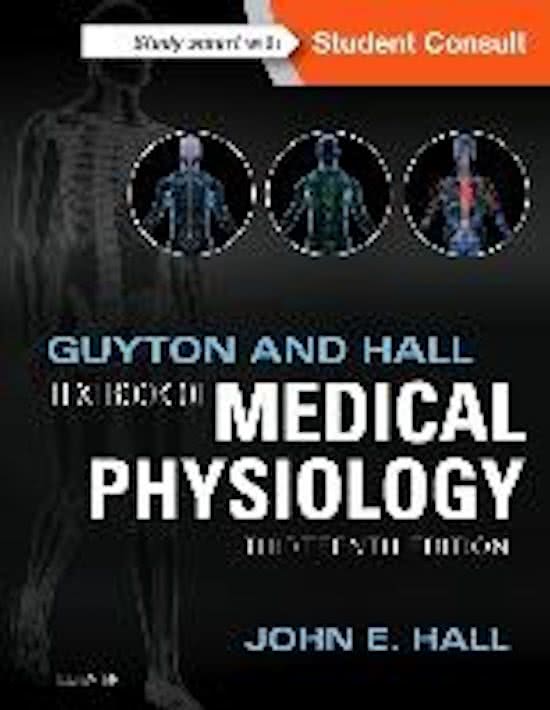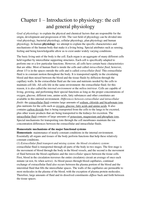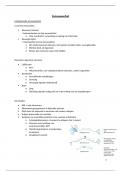and general physiology
Goal of physiology: to explain the physical and chemical factors that are responsible for the
origin, development and progression of life. The vast field of physiology can be divided into
viral physiology, bacterial physiology, cellular physiology, plan physiology and human
physiology. In human physiology: we attempt to explain the specific characteristics and
mechanisms of the human body that make it a living being. Special attributes such as sensing,
feeling and being knowledgeable allow us to exist under widely varying conditions.
The basic living unit of the body is the cell. Each organ is an aggregate of many different cells
held together by intercellular supporting structures. Each cell is specifically adapted to
perform one or a few particular functions. However, all cells have certain basic characteristics
that are alike. Most of human fluid is inside the cells and called intracellular fluid, however,
about 1/3 is in the spaces outside the cells and is called extracellular fluid. This extracellular
fluid is in constant motion throughout the body. It is transported rapidly in the circulating
blood and then mixed between the blood and the tissue fluids by diffusion through the
capillary walls. In the extracellular fluid are the ions and nutrients needed by the cells to
maintain cell life. All cells life in the same environment: the extracellular fluid; for this
reason, it is also called the internal environment or the milieu intérieur. Cells are capable of
living, growing, and performing their special functions as long as the proper concentrations of
oxygen, glucose, different ions, amino acids, fatty substances and other constitutes are
available in this internal environment. Differences between extracellular and intracellular
fluids: the extracellular fluid contains large amounts of sodium, chloride and bicarbonate ions
plus nutrients for the cells such as oxygen, glucose, fatty acids and amino acids. It also
contains carbon dioxide that is being transported from the cells to the lungs to be excreted,
plus other waste products that are being transported to the kidneys for excretion. The
intracellular fluid contains of large amounts of potassium, magnesium and phosphate ions.
Special mechanisms for transporting ions through the cell membranes maintain the ion
concentration differences between the extracellular and intracellular fluids.
Homeostatic mechanisms of the major functional systems
Homeostasis: maintenance of nearly constant conditions in the internal environment.
Essentially all organs and tissues of the body perform functions that help these relatively
constant conditions.
(1) Extracellular fluid transport and mixing system: the blood circulatory system:
extracellular fluid is transported through all parts of the body in two stages. The first stage is
the movement of blood through the body in the blood vessels, and the second is the movement
of fluid between the blood capillaries and the intercellular spaces between the tissue cells.
First, blood in the circulation traverses the entire circulatory circuit an average of once each
minute (at rest, 6x when active). As blood passes through blood capillaries, continual
exchange of extracellular fluid also occurs between the plasma portion of the blood and the
interstitial fluid that fills the intercellular spaces. The walls of the capillaries are permeable to
most molecules in the plasma of the blood, with the exception of plasma protein molecules.
Therefore, large amounts of fluid and its dissolved constituents diffuse back and forth between
the tissue spaces.




